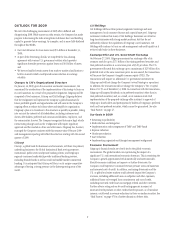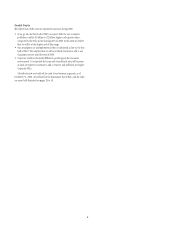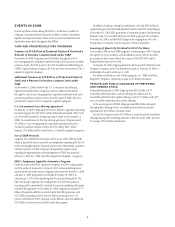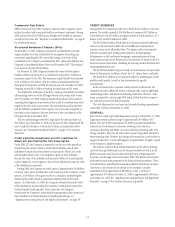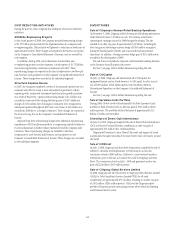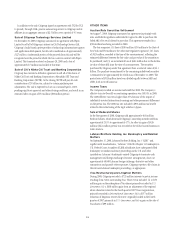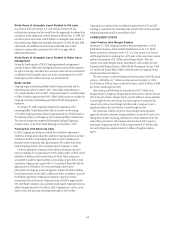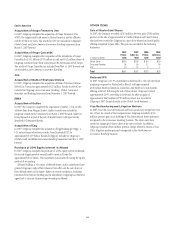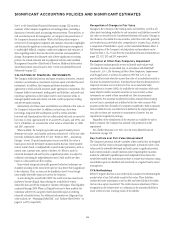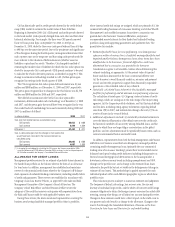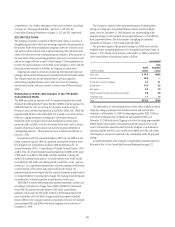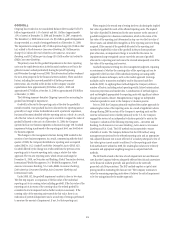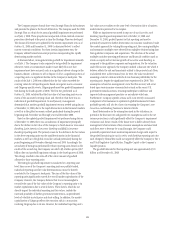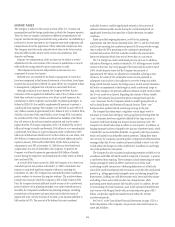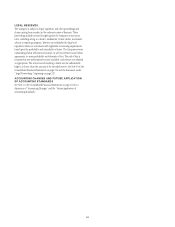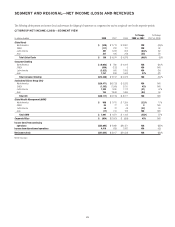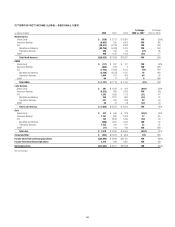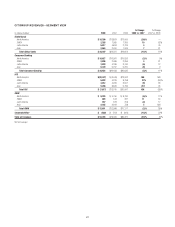Citibank 2008 Annual Report Download - page 23
Download and view the complete annual report
Please find page 23 of the 2008 Citibank annual report below. You can navigate through the pages in the report by either clicking on the pages listed below, or by using the keyword search tool below to find specific information within the annual report.ACCOUNTING CHANGES
Adoption of SFAS 157—Fair Value Measurements
The Company elected to adopt SFAS No. 157, Fair Value Measurements
(SFAS 157), as of January 1, 2007. SFAS 157 does not determine or affect the
circumstances under which fair value measurements are used, but defines
fair value, expands disclosure requirements around fair value and specifies a
hierarchy of valuation techniques based on whether the inputs to those
valuation techniques are observable or unobservable. Observable inputs
reflect market data obtained from independent sources, while unobservable
inputs reflect the Company’s market assumptions. These two types of inputs
create the following fair value hierarchy:
• Level 1–Quoted prices for identical instruments in active markets.
• Level 2–Quoted prices for similar instruments in active markets; quoted
prices for identical or similar instruments in markets that are not active;
and model-derived valuations in which all significant inputs and
significant value drivers are observable in active markets.
• Level 3–Valuations derived from valuation techniques in which one or
more significant inputs or significant value drivers are unobservable.
This hierarchy requires the Company to use observable market data,
when available, and to minimize the use of unobservable inputs when
determining fair value.
For some products or in certain market conditions, observable inputs may
not be available. For example, during the market dislocations that occurred
in the second half of 2007, and continued throughout 2008, certain markets
became illiquid, and some key inputs used in valuing certain exposures were
unobservable. When and if these markets are liquid, the valuation of these
exposures will use the related observable inputs available at that time from
these markets.
Under SFAS 157, Citigroup is required to take into account its own credit
risk when measuring the fair value of derivative positions as well as other
liabilities for which it has elected fair value accounting under SFAS 155
Accounting for Certain Hybrid Financial Instruments (SFAS 155) and
SFAS 159, The Fair Value Option for Financial Assets and Financial
Liabilities (SFAS 159), after taking into consideration the effects of credit-
risk mitigants. The adoption of SFAS 157 has also resulted in some other
changes to the valuation techniques used by Citigroup when determining the
fair value of derivatives, most notably changes to the way that the probability
of default of a counterparty is factored in, and the elimination of a derivative
valuation adjustment which is no longer necessary under SFAS 157. The
cumulative effect at January 1, 2007 of making these changes was a gain of
$250 million after tax ($402 million pretax), or $0.05 per diluted share,
which was recorded in the 2007 first quarter earnings within the S&B
business.
SFAS 157 also precludes the use of block discounts for instruments traded
in an active market, which were previously applied to large holdings of
publicly traded equity securities, and requires the recognition of trade-date
gains related to certain derivative trades that use unobservable inputs in
determining their fair value. Previous accounting guidance allowed the use
of block discounts in certain circumstances and prohibited the recognition of
day-one gains on certain derivative trades when determining the fair value of
instruments not traded in an active market. The cumulative effect of these
changes resulted in an increase to January 1, 2007 Retained earnings of
$75 million.
Adoption of SFAS 159—Fair Value Option
In conjunction with the adoption of SFAS 157, the Company also adopted
SFAS 159, as of January 1, 2007. SFAS 159 provides for an election by the
Company, on an instrument-by-instrument basis for most financial assets
and liabilities to be reported at fair value with changes in fair value reported
in earnings. After the initial adoption, the election is made at the time of the
acquisition of a financial asset, financial liability or a firm commitment,
and it may not be revoked. SFAS 159 provides an opportunity to mitigate
volatility in reported earnings that resulted prior to its adoption from being
required to apply fair value accounting to certain economic hedges (e.g.,
derivatives) while having to measure the assets and liabilities being
economically hedged using an accounting method other than fair value.
Under the SFAS 159 transition provisions, the Company elected to apply
fair value accounting to certain financial instruments held at January 1,
2007 with future changes in value reported in earnings. The adoption of
SFAS 159 resulted in an after-tax decrease to January 1, 2007 retained
earnings of $99 million ($157 million pretax). See Note 27 to the
Consolidated Financial Statements on page 202 for additional information.
17


